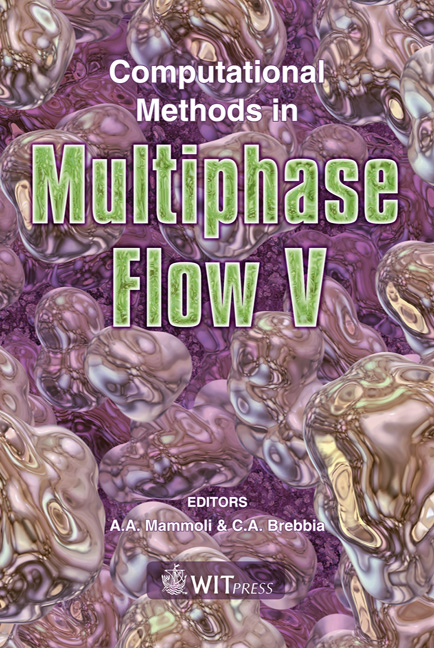Modelling Of Stratified Two Phase Flows Using An Interfacial Area Density Model
Price
Free (open access)
Transaction
Volume
63
Pages
11
Page Range
123 - 133
Published
2009
Size
1,005 kb
Paper DOI
10.2495/MPF090111
Copyright
WIT Press
Author(s)
T. Höhne & C. Vallée
Abstract
Stratified two-phase flow regimes can occur in chemical plants, nuclear reactors and oil pipelines. A relevant problem is the development of wavy stratified flows which can lead to slug generation. The slug flow regime is characterized by an acceleration of the gaseous phase and by the transition of fast liquid slugs, which carry a significant amount of liquid with high kinetic energy. It is potentially hazardous to the structure of the system due to the strong oscillating pressure levels formed behind the liquid slugs as well as the mechanical momentum of the slugs. Because these flow conditions cannot be predicted with the required accuracy and spatial resolution by the one-dimensional system codes, the stratified flows are increasingly modelled with computational fluid dynamics (CFD) codes. In CFD, closure models are required that must be validated. The recent improvements of the multiphase flow modelling in the ANSYS CFX code make it now possible to simulate these mechanisms in detail. In order to validate existing multiphase flow models and to further develop these, measurement data with a high-resolution in time and also in space are needed. For the experimental investigation of co-current air/water flows, the HAWAC (Horizontal Air/Water Channel) was built. The channel allows in particular the study of air/water slug flow under atmospheric pressure. Parallel to the experiments, CFD calculations were carried out. The two-fluid model was applied with a special turbulence damping procedure at the free surface. An Algebraic Interfacial Area Density (AIAD) model on the basis of the implemented mixture model was introduced, which allows the detection of the morphological form of the two phase flow and the corresponding switching via a blending function of each correlation from one object pair to another. As a result this model can distinguish between bubbles, droplets and the free surface. The behaviour of slug generation and propagation at the experimental setup was qualitatively reproduced by the simulation, while local deviations require a continuation of the work. The creation of small instabilities due to pressure surge or an increase of interfacial momentum should be analysed in the future. Furthermore, experiments with pressure and velocity measurements are planned and will allow quantitative comparisons, also at other superficial velocities. Keywords: CFD, stratified flow, slug flow, HAWAC.
Keywords
CFD, stratified flow, slug flow, HAWAC





